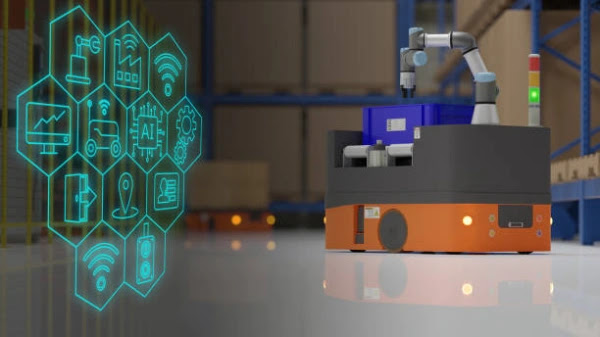Featured
- Get link
- X
- Other Apps
Enterprise Risk Management (ERM) Systems: Safeguarding Organizational Resilience
%20Systems_%20Safeguarding%20Organizational%20Resilience.jpg)
Enterprise Risk Management (ERM) Systems: Safeguarding Organizational Resilience
In the dynamic landscape of modern business, organizations
face a multitude of risks, including financial, operational, and strategic
uncertainties. Enterprise Risk Management (ERM) systems play a crucial role in
identifying, assessing, and managing these risks, ensuring an organization's
resilience and sustainability. This article provides an overview of ERM systems
and their role in safeguarding organizations against a wide range of risks.
The Need for Enterprise Risk Management
Organizations, whether large or small, are exposed to a
myriad of risks that can impact their operations, performance, and objectives.
These risks encompass various categories:
- Financial
Risks: This includes market volatility, credit risk, liquidity risk,
and fluctuations in currency and interest rates that can affect financial
stability.
- Operational
Risks: Operational risks stem from internal processes, human errors,
technology failures, and external factors, impacting efficiency and
reliability.
- Compliance
Risks: Non-compliance with regulatory requirements and standards can
lead to legal issues, fines, and reputational damage.
- Strategic
Risks: Strategic risks are associated with the uncertainty surrounding
strategic decisions, market positioning, and changes in business
environment.
- Reputational
Risks: Damage to an organization's reputation can have far-reaching
consequences on customer trust, stakeholder relationships, and market
value.
Enterprise Risk Management Defined
Enterprise Risk Management (ERM) is a comprehensive approach
to identifying, assessing, prioritizing, and managing risks across an
organization. ERM goes beyond financial risks, addressing operational,
compliance, strategic, and reputational risks as well. Key characteristics of
ERM include:
- Holistic
View: ERM takes a holistic view of an organization's risk landscape,
considering all types of risks that can impact its objectives.
- Integration:
ERM integrates risk management into an organization's overall strategic
planning and decision-making processes.
- Continuous
Process: ERM is not a one-time effort but a continuous process of
identifying, assessing, and managing risks.
- Risk
Tolerance and Appetite: ERM allows organizations to define their risk
tolerance and appetite, guiding risk management decisions.
- Communication
and Reporting: Effective communication and reporting are essential in
ERM to ensure stakeholders are aware of the risk landscape and risk
mitigation efforts.
The Components of Enterprise Risk Management
ERM systems typically comprise several key components that
facilitate the risk management process:
- Risk
Identification: Identifying and cataloging potential risks and
uncertainties relevant to the organization's objectives.
- Risk
Assessment: Assessing the impact and likelihood of identified risks to
determine their significance and prioritize them.
- Risk
Mitigation and Control: Developing and implementing strategies and
controls to mitigate, transfer, or accept risks based on the
organization's risk appetite.
- Monitoring
and Reporting: Continuously monitoring risk factors, incidents, and
reporting on risk status to relevant stakeholders.
- Scenario
Analysis and Modeling: Using scenarios and models to analyze the
potential impact of risks and assess resilience.
- Compliance
Management: Ensuring that the organization complies with relevant
regulations and standards, addressing compliance risks.
- Crisis
Management and Response: Developing plans and strategies for
responding to crisis situations and emergencies.
Benefits of Enterprise Risk Management
Implementing an ERM system offers several benefits for
organizations:
- Enhanced
Decision-Making: ERM provides decision-makers with a comprehensive
view of risks, enabling informed and strategic decision-making.
- Risk
Reduction: Identifying and managing risks proactively can lead to risk
reduction and fewer incidents.
- Reputation
Protection: Effective risk management helps protect an organization's
reputation by minimizing negative impacts.
- Efficiency
Improvements: Identifying operational risks can lead to process
improvements and increased efficiency.
- Compliance
Assurance: ERM helps organizations comply with regulatory
requirements, reducing the risk of fines and legal issues.
- Resource
Allocation: ERM facilitates resource allocation and investment based
on a deeper understanding of risks and opportunities.
Types of ERM Systems
ERM systems come in various forms, catering to the needs and
complexities of different organizations:
- Software
Solutions: ERM software platforms provide tools for risk
identification, assessment, and reporting, offering a structured approach
to risk management.
- Consulting
Services: Consulting firms offer ERM consulting services, guiding
organizations through the development and implementation of ERM
frameworks.
- Internal
ERM Teams: Larger organizations often establish internal ERM teams
responsible for managing risk across the organization.
- ERM
Frameworks and Guidelines: Industry-specific ERM frameworks and
guidelines provide best practices and principles for risk management.
Case Study: COSO ERM Framework
The Committee of Sponsoring Organizations of the Treadway
Commission (COSO) developed a widely recognized ERM framework. The COSO ERM
Framework comprises a set of principles and best practices that guide
organizations in creating, implementing, and maintaining effective ERM systems.
The framework provides a structured approach to risk management, emphasizing
the integration of risk management into an organization's strategic
decision-making processes.
Challenges and Considerations
While ERM offers significant advantages, organizations must
address certain challenges and considerations:
- Resource
Allocation: Developing and implementing ERM systems can be
resource-intensive in terms of technology, personnel, and infrastructure.
- Data
Quality and Availability: Effective ERM relies on accurate and
reliable data, which may not always be readily available.
- Change
Management: Implementing ERM may require cultural and operational
changes within the organization, which can be met with resistance.
- Interconnected
Risks: Risks are often interconnected, and ERM systems must account
for these complex relationships.
- Monitoring
and Reporting: ERM systems must be continuously monitored and reported
on to ensure they remain effective.
- Regulatory Changes: Organizations must stay updated with regulatory changes that may affect their risk management practices.
Conclusion
Enterprise Risk Management (ERM) systems are critical tools for organizations seeking to safeguard their resilience and sustainability in an increasingly complex and risk-prone business environment. By adopting a holistic approach to risk management, organizations can identify, assess, and manage financial, operational, strategic, and compliance risks effectively. ERM empowers organizations to make informed decisions, reduce risks, protect their reputation, and enhance overall performance in an ever-changing world.
- Get link
- X
- Other Apps

